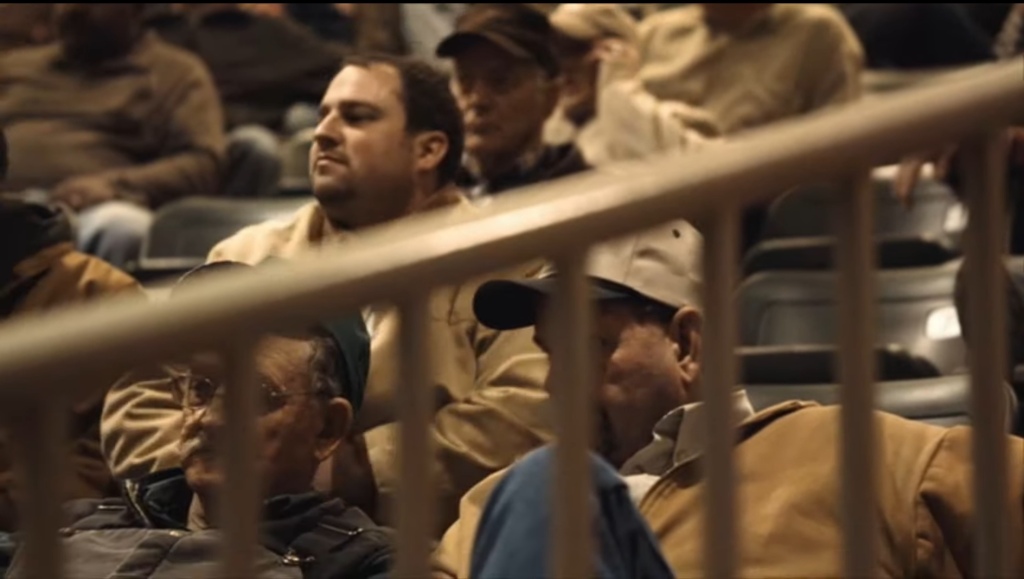Overview
The “cattle market” sequence in Winter’s Bone (Debra Granik, 2010) serves as a poignant representation of the film’s feminist ideology. We witness a cattle auction, which highlights the patriarchal and oppressive nature of the Ozarkian society. The sequence demonstrates the stark contrast between Ree’s world and the world of the oppressive men in power, through visual and auditory elements.
Key Elements, Context, and Representation
The scene takes place in an entirely male-dominated space, where the men possess the power of life and death over the cattle they are auctioning. The diegetic sound of the unintelligible language of the auction dominates the sound mix, serving to reinforce the idea that the masculine world is incomprehensible, and emphasise the power dynamic between Ree and the men. The cow at the center of the scene appears frightened, its life dependent on the mercy of the men, further reinforcing the unequal power dynamic in the room.

Ree is separated from the men by the bars that line the auction space, and her position in the scene is further emphasised by her dwarfed appearance among the intimidating men. The interior of the auction house is sickeningly yellow, connoting the monotonous and oppressive lives led by the men. The cattle also metaphorically mirror Ree’s current state of affairs – the cattle are being sold at auction, symbolic of the notion of Ree’s house potentially being sold for Jessop’s bail bond.
We then cut to a new location in which the steely blue colour palette of the corporate herding facility further emphasises the oppressive nature of the situation, furthered by the cattle moving in the same direction as Ree. When Ree calls for Thump Milton at the top of her lungs, he is unable to comprehend her, further reinforcing the invisible yet prevalent divide between the male and female worlds. At this point, the non-diegetic composed score is discordant, creating a sense of urgency. It is layered in tandem with the cries of the cattle, creating a sensory overload which reflects Ree’s distraught state of mind. The sight of one calf being separated from the others, helpless and screaming, serves as a metaphorical representation of Ree, further conveying the idea that Ree is a victim of the patriarchal society in which she lives.
In conclusion, the cattle market sequence is a powerful demonstration of the film’s feminist ideology, as it serves to highlight the oppressive and patriarchal nature of the Ozark society. Through visual and auditory elements, Debra Granik reinforces the idea that Ree is excluded from the masculine-dominated world, and that she is a victim of the oppressive power dynamic at play.